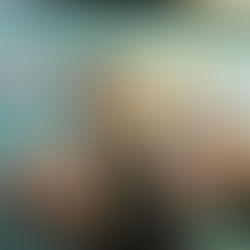Caged Bird [Dana Dajani/Rami Kanso, Jordan, 2021]
In Caged Bird, an animated music video written and directed by Dana Dajani, a woman takes a stand against her lover’s possessive behaviour, which has soiled their relationship. With animator, Rami Kanso, Dajani re-imagines the song ‘Caged Bird’, and expands its meaning and message for women today.
We first meet Dajani, dressed in a saloon-like outfit, several feathers sticking out of her hair, pacing back and forth at the top of a large manor, after a tracking shot leads us down a walkway in the middle of a manicured lawn in a secluded area. The shot stops and brings us closer as the house transforms from a large bird cage into a country mansion, setting up Dajani’s situation: she’s captive to a charlatan.

The song begins with Dajani bouncing to the rhythm and critiquing her conditions, surrounded by beige walls. We follow her through her lyrics, while animation ushers in different images that connect to her manifesto. When she speaks of her former free life, the image of a phonograph, a comfy couch, and bird on a swing appear. Then colour splotches the world like a spillage of ink, the further she mourns for her past. We go further and, by the time she details the mutual tenderness turned to possessiveness, she is seen sitting atop a stack of books in a birdcage.
So much of what makes Caged Bird an example of a woman’s rebellion is in Dajani’s dance movements, moreso than her lyrics. As she exists in different spaces within the large prison –libraries, on beautiful furniture doubling as locations for entrapment, in her memories of her lover tempting her with attention or berating her – she either flaps her arms or gracefully raises her arms to flex her wings, bouncing to the rhythm, maintaining her individuality in the knowledge that she is not a pet, and worth far more.
Dajani as a director understands that in this moment of captivity, true freedom is being able to hold a vision of yourself and future that reaches beyond your current predicament and how others see your situation. Besides some design choices (like the cursive tear outs or the re-use of the image of books) that don’t expand the story, the film does well in emphasising what rebellion can look like for women in the present.

.png)




![SHORT FOCUS 2022: So What Did We Learn Today, Georgina? [Franco Volpi, UK, 2022]](https://static.wixstatic.com/media/9b7dde_f048f3b1e32c48918d83c1285916aa3c~mv2.png/v1/fill/w_220,h_123,fp_0.50_0.50,q_95,enc_auto/9b7dde_f048f3b1e32c48918d83c1285916aa3c~mv2.webp)

![Two Knights [Piotr Szkopiak, UK, 2022]](https://static.wixstatic.com/media/9b7dde_4b197f184db54afc95f775fe48320bd7~mv2.jpeg/v1/fill/w_220,h_123,fp_0.50_0.50,q_90,enc_auto/9b7dde_4b197f184db54afc95f775fe48320bd7~mv2.webp)
![SHORT FOCUS 2022: Throw Your Heart Over First [Mark McAuley, Ireland, 2021]](https://static.wixstatic.com/media/9b7dde_f17e64582f494d729a117bddc19545a9~mv2.png/v1/fill/w_220,h_123,fp_0.50_0.50,q_95,enc_auto/9b7dde_f17e64582f494d729a117bddc19545a9~mv2.webp)

![Borrowed Time [Ginevra Gentili, UK, 2022]](https://static.wixstatic.com/media/9b7dde_ed0c27adf0984653a11c5104f74a1b58~mv2.jpeg/v1/fill/w_220,h_123,fp_0.50_0.50,q_90,enc_auto/9b7dde_ed0c27adf0984653a11c5104f74a1b58~mv2.webp)

![SHORT FOCUS 2021: Cornflakes Are Rubbish [Charlotte Nind/Jacob Bacon, UK, 2021]](https://static.wixstatic.com/media/9b7dde_800e4f3cde6147399b1eee00f4337095~mv2.jpeg/v1/fill/w_220,h_123,fp_0.50_0.50,q_90,enc_auto/9b7dde_800e4f3cde6147399b1eee00f4337095~mv2.webp)

![SHORT FOCUS 2021: Original Sin [Paolo Sinigaglia, Italy, 2020]](https://static.wixstatic.com/media/9b7dde_ca789cc5313b4f94bf20f025dc4796ee~mv2.jpg/v1/fill/w_220,h_123,fp_0.50_0.50,q_90,enc_auto/9b7dde_ca789cc5313b4f94bf20f025dc4796ee~mv2.webp)

![SHORT FOCUS 2021: Shallow [Paul Ashton, UK, 2021]](https://static.wixstatic.com/media/9b7dde_951699be78e74888bc681fcd9d6c24cc~mv2.jpg/v1/fill/w_220,h_123,fp_0.50_0.50,q_90,enc_auto/9b7dde_951699be78e74888bc681fcd9d6c24cc~mv2.webp)

![SHORT FOCUS 2021: Bohemia [Samuel Kaperski, France, 2019]](https://static.wixstatic.com/media/9b7dde_d748c63a3c814cb99859c13d18c00d7d~mv2.jpg/v1/fill/w_220,h_123,fp_0.50_0.50,q_90,enc_auto/9b7dde_d748c63a3c814cb99859c13d18c00d7d~mv2.webp)


![SHORT FOCUS 2022: So What Did We Learn Today, Georgina? [Franco Volpi, UK, 2022]](https://static.wixstatic.com/media/9b7dde_f048f3b1e32c48918d83c1285916aa3c~mv2.png/v1/fill/w_51,h_39,fp_0.50_0.50,q_95,enc_auto/9b7dde_f048f3b1e32c48918d83c1285916aa3c~mv2.webp)

![In the Eyes of a Child [Marco Ferrara, Italy, 2023]](https://static.wixstatic.com/media/9b7dde_01e294bd769e4a8aa341551ca7bc7871~mv2.jpeg/v1/fill/w_51,h_39,fp_0.50_0.50,q_90,enc_auto/9b7dde_01e294bd769e4a8aa341551ca7bc7871~mv2.webp)
![Two Knights [Piotr Szkopiak, UK, 2022]](https://static.wixstatic.com/media/9b7dde_4b197f184db54afc95f775fe48320bd7~mv2.jpeg/v1/fill/w_51,h_39,fp_0.50_0.50,q_90,enc_auto/9b7dde_4b197f184db54afc95f775fe48320bd7~mv2.webp)
![SHORT FOCUS 2022: Throw Your Heart Over First [Mark McAuley, Ireland, 2021]](https://static.wixstatic.com/media/9b7dde_f17e64582f494d729a117bddc19545a9~mv2.png/v1/fill/w_51,h_39,fp_0.50_0.50,q_95,enc_auto/9b7dde_f17e64582f494d729a117bddc19545a9~mv2.webp)

![The Story of a Trout [Gareth Leah, USA, 2022]](https://static.wixstatic.com/media/9b7dde_044565b04f7b4b6da729f134c619e377~mv2.jpeg/v1/fill/w_51,h_39,fp_0.50_0.50,q_90,enc_auto/9b7dde_044565b04f7b4b6da729f134c619e377~mv2.webp)

![My Name is Moe [Kabir McNeely, USA, 2022]](https://static.wixstatic.com/media/9b7dde_680ffd6c85f642a6844b8785364c4288~mv2.jpg/v1/fill/w_51,h_39,fp_0.50_0.50,q_90,enc_auto/9b7dde_680ffd6c85f642a6844b8785364c4288~mv2.webp)
![Borrowed Time [Ginevra Gentili, UK, 2022]](https://static.wixstatic.com/media/9b7dde_ed0c27adf0984653a11c5104f74a1b58~mv2.jpeg/v1/fill/w_51,h_39,fp_0.50_0.50,q_90,enc_auto/9b7dde_ed0c27adf0984653a11c5104f74a1b58~mv2.webp)
![SHORT FOCUS 2021: Cornflakes Are Rubbish [Charlotte Nind/Jacob Bacon, UK, 2021]](https://static.wixstatic.com/media/9b7dde_800e4f3cde6147399b1eee00f4337095~mv2.jpeg/v1/fill/w_51,h_39,fp_0.50_0.50,q_90,enc_auto/9b7dde_800e4f3cde6147399b1eee00f4337095~mv2.webp)

![The Skin She Sheds [Cass Virdee, UK, 2022]](https://static.wixstatic.com/media/9b7dde_bddd09258c164b9a90431ffd228c378a~mv2.jpeg/v1/fill/w_51,h_39,fp_0.50_0.50,q_90,enc_auto/9b7dde_bddd09258c164b9a90431ffd228c378a~mv2.webp)
![SHORT FOCUS 2021: Original Sin [Paolo Sinigaglia, Italy, 2020]](https://static.wixstatic.com/media/9b7dde_ca789cc5313b4f94bf20f025dc4796ee~mv2.jpg/v1/fill/w_51,h_39,fp_0.50_0.50,q_90,enc_auto/9b7dde_ca789cc5313b4f94bf20f025dc4796ee~mv2.webp)
![SHORT FOCUS 2021: Shallow [Paul Ashton, UK, 2021]](https://static.wixstatic.com/media/9b7dde_951699be78e74888bc681fcd9d6c24cc~mv2.jpg/v1/fill/w_51,h_39,fp_0.50_0.50,q_90,enc_auto/9b7dde_951699be78e74888bc681fcd9d6c24cc~mv2.webp)
![SHORT FOCUS 2021: Bohemia [Samuel Kaperski, France, 2019]](https://static.wixstatic.com/media/9b7dde_d748c63a3c814cb99859c13d18c00d7d~mv2.jpg/v1/fill/w_51,h_39,fp_0.50_0.50,q_90,enc_auto/9b7dde_d748c63a3c814cb99859c13d18c00d7d~mv2.webp)

![SHORT FOCUS 2021: Yuluu [Fatima Kried, UK, 2021]](https://static.wixstatic.com/media/9b7dde_eb393025c61143cf98b6e551df4adf77~mv2.jpg/v1/fill/w_51,h_39,fp_0.50_0.50,q_90,enc_auto/9b7dde_eb393025c61143cf98b6e551df4adf77~mv2.webp)